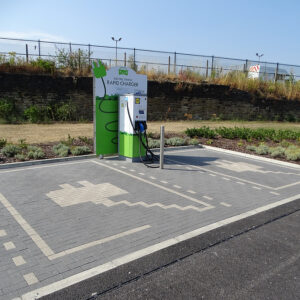On Monday, January 8 U.S. Secretary of Energy Jennifer Granholm will meet the state’s entire Democrat federal delegation in Nasha to tout “how Bidenomics is helping to lower costs for American households.” Granholm will also pitch the alleged benefits of the Biden administration’s billions in green energy spending.
What they won’t be talking about is her agency’s record on electric vehicle (EV) charging stations.
It was supposed to be a highlight of President Joe Biden’s first year in office. In 2021, Congress approved $7.5 billion for the National Electric Vehicle Infrastructure Formula Program (NEVI) in hopes of building thousands of charging stations for electric vehicles.
Today, with more than $2 billion spent on grants, how many charging stations have the Biden administration built?
One. In Ohio. Though the White House is quick to point out ground has been broken on charging locations in Vermont, Pennsylvania, and Maine, too.
In New Hampshire? Nada.
“If I had to use the word ‘bureaucracy,’ I think that one covers it all,” Joe McCabe, CEO and president of AutoForecastSolutions, an automotive industry analysis firm, told InsideSources. “Anything that needs to be government funded and is related to Department of Transportation or general government-supported building operations is a timely endeavor.”
While electric vehicle sales in the U.S. are expanding, they remain a tiny fraction of the overall vehicle market. EV sales accounted for around 8 percent of all new vehicle sales last year, even with generous incentives. According to Granholm, there are about 11,000 EVs in the state, less than one percent of the total number of registered vehicles.
Environmental groups and some EV companies have long complained that the U.S. lagged behind on EV infrastructure. In the months before Congress approved NEVI, the Climate Group lobbied for more charging stations in hopes of achieving net-zero greenhouse gas emissions by 2050.
The Biden administration hoped the charging network would improve EV sales and usage. Biden bragged last year that the charging stations would be “easy to find.” He also promised that drivers would “be able to travel across the nation.”
U.S. Department of Energy statistics show there are more than 60,000 public charging station locations in the country, with about 161,000 ports. New Hampshire has just 228 locations and 537 ports.
None have been built with Biden’s Infrastructure Investment and Jobs Act money, though the state is touting some $17 million over five years via the NEVI program. They are hoping to have some operational by the fall of 2025.
But at what cost?
Commercial use stations tend to cost more than $70,000 for parts and installation, according to HomeAdvisor. Some charging ports cost $154,000, while a fast charging port might run up to $489,000. Labor costs can run another $50,000.
And those numbers may underestimate the cost, based on Pennsylvania’s example.
The Pennsylvania Department of Transportation handed out around $34.84 million of its NEVI funding for 56 charging stations last year. Another $22 million in grants heads to companies this year for an additional 35 stations. Do the math, and that’s $624,175.82 per charging station.
Marc Scribner, senior transportation policy analyst at the Reason Foundation, told InsideSources that bureaucrats drove up costs for the NEVI program. Some of their strict requirements include mandating the use of union electricians along with prevailing wage rules.
“All serve to increase public charging station costs above comparable private charging stations,” said Scribner. “We won’t know how much more until the damage is already done, but based on past experience, these federal labor requirements likely raise costs by at least 10 percent…”
The delays and hire costs aren’t surprising to the Associated Building and Contractors (ABC) trade association.
“This is an unfortunate but predictable result of the Biden administration’s approach to implementing this program,” said Ben Brubeck, ABC vice president of regulatory, labor, and state affairs. “While ABC and other construction industry stakeholders urged the DOT to welcome all qualified contractors to participate in building this critical infrastructure, the agency chose to include union-favoring labor requirements that exacerbate existing construction industry labor shortages and likely contributed to the NEVI Formula Program’s stagnation.”
Scribner said grant problems tend to move slowly and noted that NEVI’s requirements were particularly burdensome.
“States were first required to submit a charging network plan for approval, which took a year following enactment of [the law],” he said. “Then, the final rule on standards and requirements wasn’t published until February 2023. Given the complexity of the NEVI program, this timeline isn’t too surprising.”




